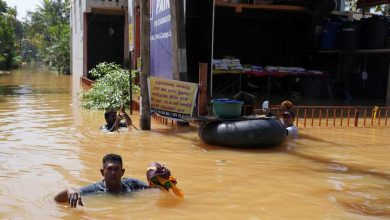HAS AUSTRALIA FOUND A KEY TO BATTLING COVID-19?
Australian Modeling Suggests COVID-19 Can Be Beaten in 13 Weeks With 80% Social Distancing
A University of Sydney data study from the Faculty of Engineering has revealed that social distancing must be adopted by at least 80 percent of the Australian population to reduce the spread of COVID-19.
If social distancing measures were adopted by at least 80 percent of the Australian population, we could expect to see a control of the spread of the COVID-19 pandemic in just over three months, new research by the University of Sydney has found.
Led by Complex Systems academic and pandemic modelling expert, Professor Mikhail Prokopenko, the study also revealed that social distancing would be an unproductive measure if adopted by less than 70 percent of the population.
The research found that if 90 percent of the Australian population adopted social distancing, the spread of COVID-19 could be controlled by July 2020, whereas social distancing of less than 70 percent would not suppress the pandemic.
“If we want to control the spread of COVID-19 – rather than letting the disease control us – at least eighty percent of the Australian population must comply with strict social distancing measures for at least four months,” said Professor Mikhail Prokopenko.
“However, if ninety percent of the population complies, then the duration could be as short as thirteen to fourteen weeks – meaning if we began tomorrow we could expect a control of COVID-19 by July,” he said.
“Conversely, if less than seventy percent of the population is adopting social distancing measures, we cannot suppress the spread of the pandemic and any social distancing could be a fruitless effort,” he said.
“There is a clear trade off – stricter measures imposed earlier would reduce how long our lives are impacted by this disease. On the contrary, laxer protocols could mean a longer, more drawn out and ineffective struggle against COVID-19,” he said.
Study suggests tough measures early on
The research also found that for every day the stricter social distancing measures are delayed, society would need to endure several more days under a longer suppression policy.
“There’s good reason for imposing tough measures early on. The longer we delay the peak, the more time our healthcare system has to prepare for it by accessing more resources such as ICU beds, ventilators, antivirals and trained health workers,” said Professor Prokopenko.
The researchers also found that while school closures had the potential to compensate for ten percent of a lack of social distancing compliance, they only delayed the peak of the pandemic by two weeks.

They also found that school closures did not significantly reduce new cases for older adults, but slightly increased the fraction of new cases in children around the peak of the pandemic in Australia.
How the modelling worked
The AceMod simulator comprises over twenty-four million software agents, each with attributes of an anonymous individual, such as age, gender, occupation, susceptibility and immunity to diseases. Contact rates within different social contexts, such as households, household clusters, local neighbourhoods, schools, classrooms and workplaces are also built into the program.
The set of generated agents captures average characteristics of the real population and is calibrated to 2016 Australian Census data with respect to key demographic statistics.
The interactions result in transmission of the disease from infectious to susceptible individuals: given the contact and transmission rates, the simulation computes and updates agents’ states over time, starting from initial infections, seeded in international airports around Australia
In this scenario, 80 percent social distancing could either mean – any person in one household could go out once in five days, or, one member per family of five could go out daily, but the other four stay at home all the time.
Reference: https://arxiv.org/pdf/2003.10218.pdf
This article has been republished from the following materials. Note: material may have been edited for length and content. For further information, please contact the cited source.






